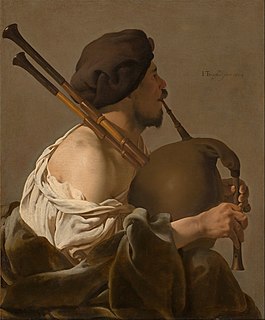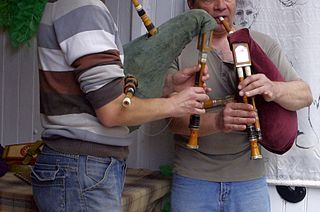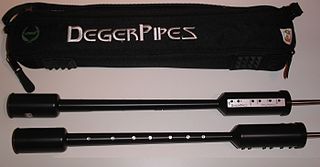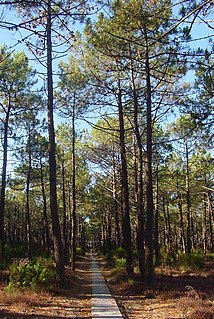
Bagpipes are a woodwind instrument using enclosed reeds fed from a constant reservoir of air in the form of a bag. The Scottish Great Highland bagpipes are the best known in the Anglophone world; however, bagpipes have been played for a millennium or more throughout large parts of Europe, northern Africa, and western Asia, including Turkey, the Caucasus, and around the Persian Gulf. The term bagpipe is equally correct in the singular or plural, though pipers usually refer to the bagpipes as "the pipes", "a set of pipes" or "a stand of pipes".

The uilleann pipes are the characteristic national bagpipe of Ireland. Earlier known in English as "union pipes", their current name is a partial translation of the Irish-language term píobaí uilleann, from their method of inflation. There is no historical record of the name or use of the term uilleann pipes before the twentieth century. It was an invention of Grattan Flood and the name stuck. People mistook the term 'union' to refer to the 1800 Act of Union; this is incorrect as Breandán Breathnach points out that a poem published in 1796 uses the term 'union'.

The chanter is the part of the bagpipe upon which the player creates the melody. It consists of a number of finger-holes, and in its simpler forms looks similar to a recorder. On more elaborate bagpipes, such as the Northumbrian bagpipes or the Uilleann pipes, it also may have a number of keys, to increase the instrument's range and/or the number of keys it can play in. Like the rest of the bagpipe, they are often decorated with a variety of substances, including metal (silver/nickel/gold/brass), bone, ivory, or plastic mountings.

The Great Highland bagpipe is a type of bagpipe native to Scotland. It has acquired widespread recognition through its usage in the British military and in pipe bands throughout the world.

The Galician gaita is the traditional instrument of Galicia and northern Portugal.

Swedish bagpipes are a variety of bagpipes from Sweden. The term itself generically translates to "bagpipes" in Swedish, but is used in English to describe the specifically Swedish bagpipe from the Dalarna region.
Gascony is a region of France that has produced several well-known performers and composers of classical, folk and popular music. Gascony is home to several major music festivals. In modern days, the town of Merciac is home to an annual jazz festival, one of the biggest in France. The town of Mirande is also home to an annual festival, devoted to country music.

As Europe experienced a wave of roots revivals in the 1950s and 1960s, France found its regional culture reviving traditional music. Brittany, Limousin, Gascony, Corsica and Auvergne were among the regions that experienced a notable resurgence in the popularity of folk music. Traditional styles of music had survived most in remote areas, such as the island of Corsica and mountainous Auvergne, as well as the more nationalist lands of the Basques and Bretons.

Diple, dvojnice, or dvojanke is a traditional woodwind musical instrument in Serbian music, Croatian and Montenegrin music.
Cornish bagpipes are the forms of bagpipes once common in Cornwall in the 19th century. Bagpipes and pipes are mentioned in Cornish documentary sources from c.1150 to 1830 and bagpipes are present in Cornish iconography from the 15th and 16th centuries.

French bagpipes cover a wide range and variety of styles of bagpipes and piping, from the Celtic piping and Music of Brittany to the Northern Occitan's cabrette.
The Brian Boru bagpipe was invented and patented in 1908 by Henry Starck, an instrument maker, in London, in consultation with William O'Duane. The name was chosen in honour of the Irish king Brian Boru (941–1014), though this bagpipe is not a recreation of any pipes that were played at the time of his reign. The Brian Boru pipe is related to the Great Highland Bagpipe, but with a chanter that adds four to thirteen keys, to extend both the upper and lower ends of the scale, and optionally adds chromatic notes. His original pipes changed the drone configuration to a single tenor drone pitched one octave below the chanter, a baritone drone pitched one fifth below the tenor drone, and a bass drone pitched two octaves below the chanter, following the drone set-up of the Northumbrian Small pipes. Some later designs of these pipes reverted to the Great Highland Bagpipe configuration of two tenor drones and one bass drone. The Brian Boru bagpipe was played for a number of years by the pipe band in the Royal Inniskilling Fusiliers, as well as a number of civilian pipe bands. It is still played in Ireland but has lost most of its former popularity. Bagpipe makers in both the United Kingdom and Pakistan still make the chanters.

Welsh bagpipes The names in Welsh refer specifically to a bagpipe. A related instrument is one type of bagpipe chanter, which when played without the bag and drone is called a pibgorn (English:hornpipe). The generic term pibau (pipes) which covers all woodwind instruments is also used. They have been played, documented, represented and described in Wales since the fourteenth century. A piper in Welsh is called a pibydd or a pibgodwr.

The electronic bagpipes is an electronic musical instrument emulating the tone and/or playing style of the bagpipes. Most electronic bagpipe emulators feature a simulated chanter, which is used to play the melody. Some models also produce a harmonizing drone(s). Some variants employ a simulated bag, wherein the player's pressure on the bag activates a switch maintaining a constant tone.
There are several types of Croatian bagpipes, they are:
The redpipe is a brand of electronic bagpipes, an electronic musical instrument made to emulate the sound and characteristics of the bagpipe. In contrast with many other electronic bagpipes which are based solely on a bagpipe chanter, redpipes feature a pressure-sensitive bag in emulation of a bagpipe's bag.
It is unclear whether Lincolnshire bagpipes refer to a specific type of pipes native to Lincolnshire, England, or to the popularity of a more general form of pipes in the region. Written records of bagpipes being associated with Lincolnshire date back to 1407, but it is difficult to find certain proof that any regional variation of the bagpipe existed which was peculiar to Lincolnshire. Despite the lack of evidence for a uniquely local instrument, it is clear that the bagpipe was enjoyed by the people of Lincolnshire.

McCallum Bagpipes is a company that manufactures Great Highland bagpipes. Founded in 1998, it is based in Kilmarnock, Scotland. The company has worked with bagpiper Willie McCallum to design several products.














